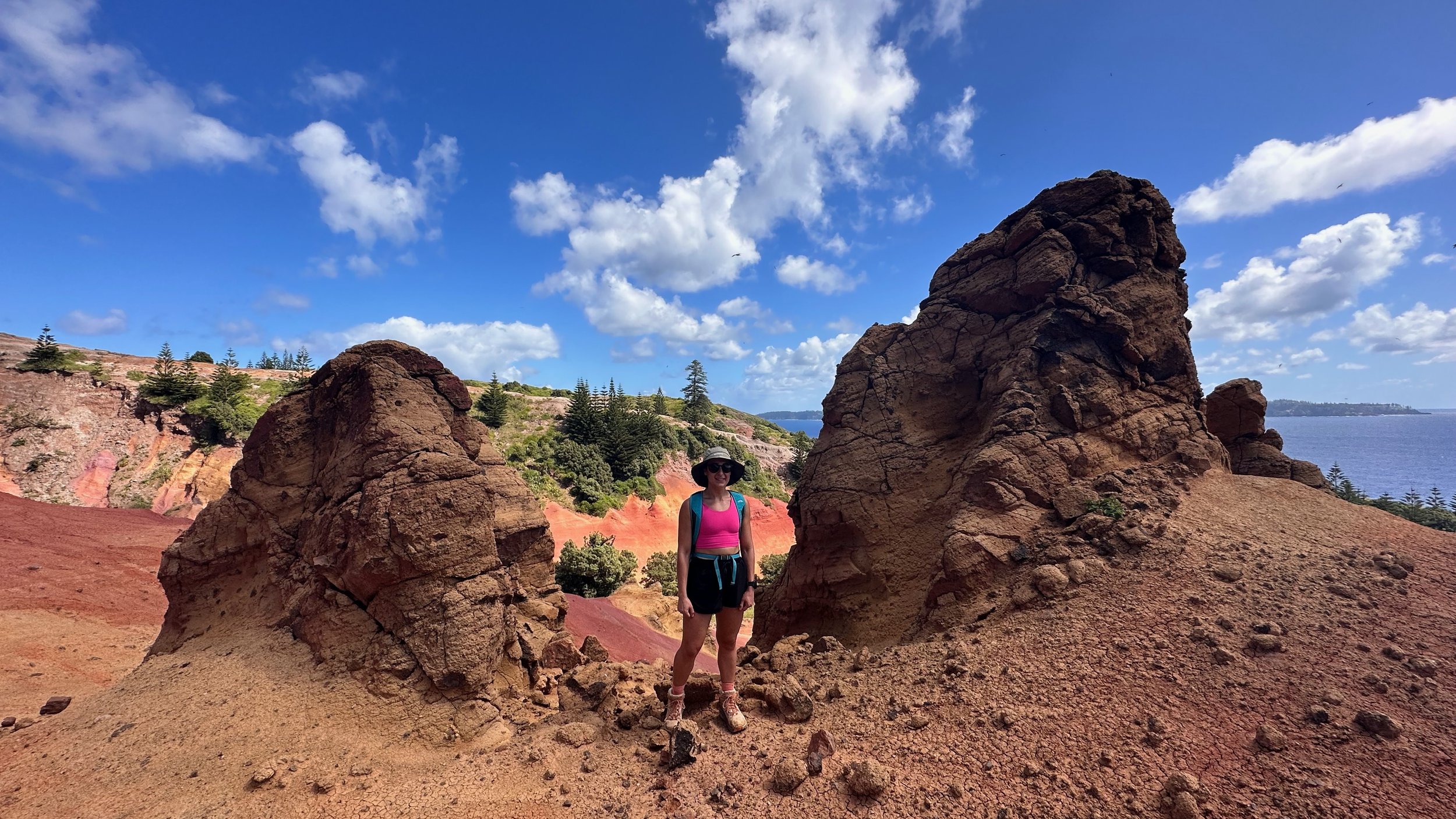Being in nature, joyfully
Nicola Sockhill, PhD candidate in the lab, reflects on her journey to science, nature and UQ.
I credit my love of nature to my family’s yearly trips to O’Reilly’s, including memories of hiking to Moran’s Falls, finding a satin bowerbird’s architectural nest and getting lost in the evening mist in the fields at Luke’s Farmhouse. Subtropical rainforest remains one of my favourite ecosystem types, probably due to those early experiences in Lamington National Park.
After living in a small town in north Queensland for my childhood and teenage years, I took the opportunity to move to a city as soon as possible by starting a Bachelor of Design, majoring in Architecture at Queensland University of Technology in Brisbane. I soon realised I wasn’t passionate about architecture (yes, even despite the bowerbird’s early influence), so I changed to a Bachelor of Business with a major in Advertising (should I keep this bowerbird analogy going – what are the blue decorations if not advertising?). I persisted through five years planning and implementing ad campaigns and generally hating life before finally deciding it wasn’t for me. I did, however, first let this career take me to London for two years, but I eventually moved back to Brisbane to finally start my career in science.
After false starts, finding my path
I completed a Bachelor of Advanced Science (Honours) here at UQ, and this is where I began to establish some of my important friendships and professional relationships. Unfortunately, the final year of the degree was the infamous 2020, so it was a pared-back experience that even this introvert found challenging! I did, however, meet Professor Richard Fuller, and that set me on the fulfilling academic path I’m on today.
Hiking with the Fuller–Amano labs at Christmas Creek. Credit Louis Backstrom.
My Honours year with Rich was foundational to my research career so far. I clarified to myself that I love research, and learned how to work with big datasets, so decided that this is the sort of work I really enjoy and want to pursue for the foreseeable future. I worked with a great team of co-authors – Richard, as well as Angela Dean and Rachel Oh – and turned this research into my first publication (Beyond the ecocentric: Diverse values and attitudes influence engagement in pro-environmental behaviours), for which I was shortlisted for the Rachel Carson Prize.
I continued with Rich for my PhD. I’m now around halfway through it time-wise (and an undisclosed proportion of the way through it output-wise, eek). I still work with large datasets, but now predominantly use citizen science (eBird and iNaturalist) data as well as a variety of spatial and remote sensing datasets. I use them to explore how urban greenspaces support biodiversity, and I’ve already found that quite a lot of what we assume to be true is not quite right. I’m really interested in working with other researchers who use large-scale citizen science data, not only to discover interesting results but also to develop creative and optimised ways to work with these datasets. Working with such large-scale (and exponentially increasing) datasets is a relatively new opportunity and I’m excited to be at the forefront of this rapidly changing field.
This citizen science work is complemented by a series of projects looking at insects in urban garden beds in Melbourne, and how these insects are influenced by different design features. I’m excited to see how this researcher-collected data compares to citizen science data, and to see how the findings of these projects complement each other. I’m working with Professor Sarah Bekessy and others from RMIT on this, and hope the findings will enable more informed urban greenspace design and maintenance planning.
Exploring Norfolk and being active
While my work can be done on a laptop, I take the opportunity to help colleagues and friends with their fieldwork. My most recent trip was to Norfolk Island to help fellow CBCS PhD candidate James Tweed with his entomological research, where we set lots of insect traps in various vegetation types. Norfolk Island is beautiful and has many endemic and native species – some of which James himself will be describing as part of his work! – and habitats that we were able to explore while we were working. We even got to take a day trip to the breathtaking Phillip Island, a truly special experience featuring an abundance of seabirds and indescribable landscapes. Unfortunately, this trip was cut short by the impending cyclone Gabrielle, but James – if you ever need a volunteer in the future, I’ll do it!
Outside of work, I’m almost always outside or doing something active. During the week I’ll be either running or at the gym, and on weekends birding or hiking (or running or at the gym). In full-circle logic, my early research touched on how being in nature is incredibly important for mental and physical health, so even though I naturally feel happier when I’m outside and active, I try to remind myself of this during those times when I’m feeling tired or disenfranchised or working too hard.
While I’m only a few years into my academic career, I’m so happy to be able to continue doing what I love: working with great people, finding interesting and novel results and somehow making that fit into what can justifiably be passed off as a career.
Exploring Phillip Island on a day trip from Norfolk Island. Credit: Samantha Wong-Topp.

